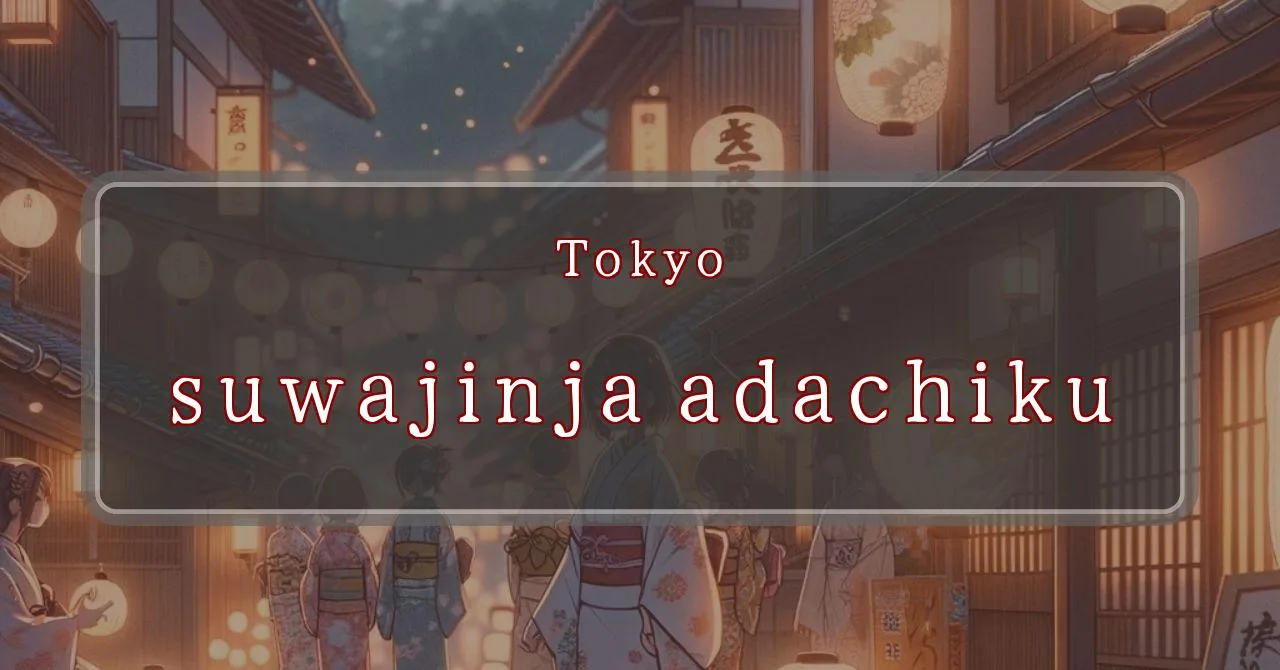Enchanting Shrine Festival in Tokyo: A Journey Through History and Tradition
Basic Information
諏訪神社 (Suwa Jinja) is a Shinto shrine located in Nishiarai, Adachi Ward, Tokyo,
Main Events and Attractions of the Festival
The 諏訪神社 (Suwa Jinja) festival is a lively and colorful event that attracts many visitors each year. Some of the main events and attractions of the festival include:
Mikoshi Procession
One of the highlights of the festival is the mikoshi procession. A mikoshi is a portable shrine that is carried through the streets by a team of people. The mikoshi of 諏訪神社 is particularly large and impressive, and it is carried by a team of over 100 people. The procession is a lively and energetic event, and it is a great opportunity to see the local community come together to celebrate.
Bon Odori Dance
Another popular event at the festival is the bon odori dance. Bon odori is a traditional Japanese folk dance that is performed during the Obon festival, which is a time to remember and honor the dead. The bon odori dance is a lively and upbeat dance, and it is a great way to experience Japanese culture. Visitors to the festival are encouraged to join in the dance and have some fun.
Food Stalls
No Japanese festival is complete without food stalls! At the 諏訪神社 festival, there will be a variety of food stalls selling a wide range of delicious Japanese dishes. Some of the most popular dishes include yakitori (grilled chicken skewers), takoyaki (octopus balls), and taiyaki (fish-shaped cakes filled with sweet red bean paste). There will also be a variety of drinks available, including beer, sake, and soft drinks.
Blessings and Deities
諏訪神社 (Suwa Jinja) is dedicated to the god Takeminakata-no-Mikoto, who is known as the god of wind, water, and agriculture. He is also associated with good luck and fortune. Visitors to the shrine often pray for success in their studies, career, and relationships. The shrine is also popular among couples who are hoping to have children.
Origin and History
The origins of 諏訪神社 are unclear, but it is believed to have been founded over 1,000 years ago. The shrine was originally located in Nagano Prefecture, but it was moved to its current location in Tokyo in 1629. The shrine has been rebuilt several times over the years, most recently in 1935. The current shrine building is a beautiful example of traditional Japanese architecture.
Tips and Notes for Visitors
Here are some tips and notes for visitors to the 諏訪神社 festival:
- The festival is held on August 25th, 26th, and 27th, 2024.
- The festival is free to attend.
- The festival is very popular, so it is important to arrive early to avoid crowds.
- There will be a variety of food and drink stalls at the festival.
- There will also be a number of traditional Japanese performances, such as taiko drumming and kagura dancing.
- The festival is a great opportunity to experience Japanese culture and traditions.
Parking Information
There is limited parking available at the shrine. Visitors are encouraged to use public transportation or park in nearby parking lots.
Popular Stalls and Food Carts in Recent Years
| Type of Stall | Description |
|---|---|
| Takoyaki | A staple at Japanese festivals. Characterized by a crispy outside and a creamy inside. |
| Jaga Butter | A simple yet popular snack of hot potatoes lavishly topped with melted butter. |
| Baby Castella | Small castella cakes, sweet and fluffy treats enjoyed by children and adults alike. |
| Grilled Ayu with Salt | Fresh ayu fish grilled whole with salt, a savory taste of Japanese summer. |
| Shaapin | A unique gourmet item influenced by foreign cuisine, with a chewy skin wrapping the filling. |
| Okonomiyaki | A Japanese grilled dish where you often choose your own ingredients for a personalized flavor. |
| Cotton Candy | A fluffy, sweet snack that’s extremely popular with children. |
| Chocolate Banana | A banana coated in chocolate, a fun and visually appealing dessert. |
| Kushiyaki | Various types of ingredients skewered and grilled, an easy-to-enjoy snack. |
| Yakisoba | Fried noodles mixed with a special sauce, a fast food favorite in Japan. |



